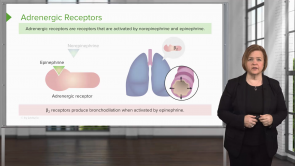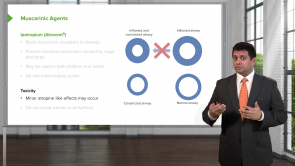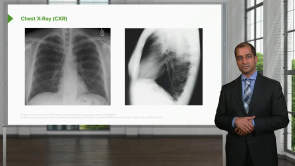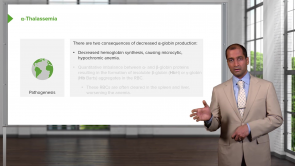Neonatal Respiratory Distress Syndrome: TTN, RDS and PPHN

Über den Vortrag
Der Vortrag „Neonatal Respiratory Distress Syndrome: TTN, RDS and PPHN“ von Carlo Raj, MD ist Bestandteil des Kurses „Pulmonology: Foundations“.
Quiz zum Vortrag
What is the physiological change seen in the levels of PaO2 during the transition from intrauterine to extrauterine life?
- 25 mmHg to 60–80 mmHg
- 15 mmHg to 40 mmHg
- 25 mmHg to 180 mmHg
- 125 mmHg to 60–80 mmHg
- 25 mmHg to 160 mmHg
Which of the following statements about transient tachypnea of the newborn is not correct?
- It is caused by a deficiency in surfactant.
- It is seen around 34–37 weeks of gestation.
- It is often seen in infants delivered by elective cesarean section.
- It is due to decreased expression of amiloride-sensitive airway epithelial Na+ channels.
- Vocal cord grunting occurs within 2 hours of delivery.
Which of the following is a side effect of excess oxygenation in the management of neonatal respiratory distress syndrome?
- Retinopathy of prematurity and bronchopulmonary dysplasia
- Persistent pulmonary hypertension
- Cephalohematoma
- Hyperbilirubinemia
- Hypoglycemia
Which of the following features is not likely seen in the transient tachypnea of the newborn?
- Pulmonary hemorrhage
- Nasal flaring
- Intercostal muscle retractions
- Tachypnea
- Expiratory vocal cord grunting
Which of the following can result from interventions like positive pressure ventilation and oxygenation in preterm infants?
- Bronchopulmonary dysplasia
- Patent ductus arteriosus
- Chylothorax
- Persistent pulmonary hypertension
- Pneumonia
Which of the following statements regarding the pathology of persistent pulmonary hypertension is most correct?
- Failure to relax pulmonary vasculature
- The pulmonary vascular imbalance between vasoconstriction by nitric oxide and vasodilation by endothelin
- The appropriate pulmonary vascular balance between vasodilation by nitrous oxide and vasoconstriction by endothelin
- The pulmonary vascular imbalance between vasodilation by nitric oxide and vasoconstriction by norepinephrine
- The pulmonary vascular imbalance between vasodilation and vasoconstriction by endothelin
Which of the following conditions is common in late preterm infants?
- Transient tachypnea of the newborn
- Persistent pulmonary hypertension
- Subglottic stenosis
- Bronchopulmonary dysplasia
- Neonatal respiratory distress syndrome
Which of the following represents the correct statement about fetal physiology?
- Increased pulmonary vascular resistance and decreased systemic vascular resistance
- Decreased pulmonary vascular resistance and increased systemic vascular resistance
- Increased pulmonary vascular resistance and systemic vascular resistance
- Decreased pulmonary vascular resistance and systemic vascular resistance
- Increased pulmonary vascular resistance and normal systemic vascular resistance
Which of the following is least likely to be seen in respiratory distress syndrome of the newborn?
- Occurs in > 28 weeks of gestational age
- Occurs in < 28 weeks of gestational age
- Use of accessory muscles of respiration
- Nasal flaring
- Expiratory vocal cord grunting
Which of the following is not seen in a patient with transient tachypnea of the newborn?
- Heart rate less than 60 beats/minute
- Heart rate at least 60 beats/minute
- Nasal flaring
- Intercostal retractions
- Expiratory vocal cord grunting
Diese Kurse könnten Sie interessieren
Kundenrezensionen
5,0 von 5 Sternen
| 5 Sterne |
|
1 |
| 4 Sterne |
|
0 |
| 3 Sterne |
|
0 |
| 2 Sterne |
|
0 |
| 1 Stern |
|
0 |
DR.CARLO RAJ MAKES CONCEPTS EASIER THROUGH HIS ACTION AND WAY OF TEACHING
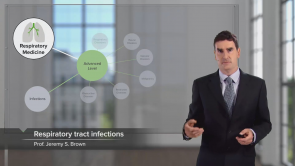

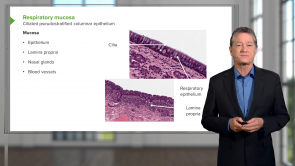
![Respiratory System [Archive]](https://assets-cdn1.lecturio.de/lecture_collection/image_medium/7488_1545146213.png)
